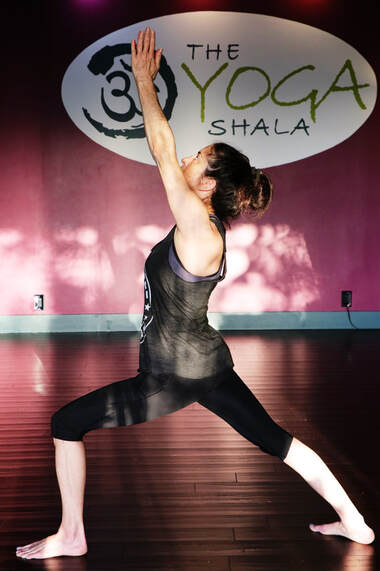 Hey gang! It’s Shelby here, your mid-morning Mysore teacher and General Manager. Can you all believe that we’re halfway through the summer? Where does the time go? This summer has been a bit challenging for me, and maybe you’ve had your own challenges as well. But I try to look at it as a time to grow, to learn about myself. Let me tell you my story: my bedroom has a leak, which has caused extensive water damage and mold. To make a long story short, my entire bedroom was ripped apart: part of the ceiling and walls were removed along with the entire floor. I slept on a mattress in my dining room for two weeks. Not fun! But what I did try to remember each morning was the word “equanimity”. Equanimity is defined as: mental calmness, composure, and evenness of temper, especially in a difficult situation. Isn’t that what we’re working on in our yoga practice? We try to keep the mind focused and calm, the breath steady, even as we move through difficult poses. Our bodies may feel uncomfortable at times, but we try to remain steady. What a great lesson for both on and off the mat: to remain equanimous in the face of adversity. Remaining calm during difficult times is a lifelong work-in-progress. I can’t say I was always equanimous throughout my bedroom ordeal. As I can’t say that my breath is always steady and my mind is always calm in each asana. But I know that I WILL return to the steadiness when I can. Equanimity is always waiting for us: it IS our authentic self.
1 Comment
By Jennifer MillerJennifer Miller is a Central Florida yoga teacher who completed her Yoga Nidra Professional Training at Amrit Yoga Institute in 2018, and has been an Ashtanga practitioner since January of 2018.  Sri K. Pattabhi Jois once said, "Yoga is for everyone, except lazy people." From experience, I believe this to be true. Ashtanga requires a certain level of commitment to self-transformation. You must learn to practice with discipline and consistency to see and feel the results. The Mysore style of yoga is a self-facilitated practice modified for each individual practitioner with individual attention from your teacher. Coming to your mat and doing the same sequence of asanas (postures) brings you into self-awareness of your body and the deep internal workings of the mind. The mind places so many limiting beliefs on our capabilities as human beings that we believe it and abide by the mind as if the mind is totally in control. Through the practice of Ashtanga, you come to learn all about your strengths and weaknesses. By practicing with commitment, consistency, and discipline, you will develop the tools to move through the false identification of the self, and you will embody the infinite potential of the human experience. If you are ready to stop moving through the motions of life and truly start living, Ashtanga is the practice for you. BY Isis GentlesAfter exploring various types of yoga for a year, Isis began practicing Ashtanga at The Yoga Shala in 2014. She completed Krista Shirley’s Ashtanga Yoga Apprenticeship in 2018, and plans to continue teaching at The Yoga Shala. 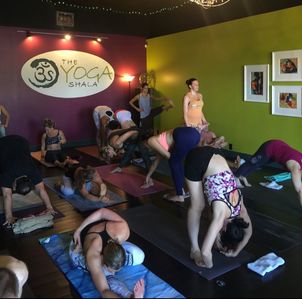 Ashtanga Vinyasa Yoga was created by Sri K. Pattabhi Jois. There are two ways in which this method of yoga can be taught. The first is in a traditional led class where the instructor is walking throughout the room, calling out the poses and the breath count. The second is the method in which Sri K. Pattabhi Jois taught his classes called Mysore style. The name comes from the town in which he settled once he started teaching yoga - Mysore, India. Mysore style Ashtanga Vinyasa Yoga is, in my opinion, the best way to learn yoga because it allows you to learn at your own pace, with your teacher guiding you every step of the way, especially in the beginning. When you come to class, there will be other students doing their practice at their own pace. The instructor will walk around the room, assisting students to go deeper in the postures, correcting posture alignment or giving verbal cues as needed. During your very first class your teacher will show and guide you through learning how to properly breathe with sound. This method of inhaling and exhaling through the nose with the mouth closed serves to heat the body so that toxins can be released through sweat. Following learning how to breathe, the instructor will discuss bandhas or energy locks. There are three such energy locks that are utilized to maintain the prawn or life force within the body. They are mula, uddiyana and jalandhara bandhas. Mula bandha is found at the base of the pelvic floor between the genitals and the anus. Upon inhaling, this area is gently squeezed upward, strengthening the pelvic floor muscles over time. Uddiyana bandha is found just below and behind the navel. If the practitioner has learned to properly breathe with sound, uddiyana bandha will engage upon exhaling. The lower abdomen will naturally be pulled inwards. Jalandhara bandha is located at the throat. In order to engage jalandhara bandha, the practitioner will bring the chin to the chest. This bandha is really only used in two asanas in the primary series but can be used in various pranayama techniques. The last bit of information your instructor will give you prior to beginning the primary series are the drishti’s or gaze points. During asana practice it can be easy to lose focus or start to look around at other yogis practicing. In order to stay focused on your body and what you are doing, Sri K. Pattabhi Jois taught these gaze points. There are eight of them: Urdhva (upwards), brumadhyai (third eye), nasagrai (nose), nabhi cakra (navel), padayoragrai (feet), angustha madhyai (thumb), hastagrai (hand) and parsva (side). After going over these important aspects of the Ashtanga method, the instructor will begin to walk you through Sun Salutation A and B and the first few postures of the Standing sequence. While you are memorizing the order of the postures the instructor will be there to guide you if you get stuck. As you get stronger and more flexible and are able to do these beginning postures, the instructor will give you new postures to work on. You may begin with practicing three days a week but the goal would be to practice six days a week, taking a day for rest.  After developing a consistent daily practice of Ashtanga yoga, the practitioner may become very aware of the phases of the moon. Whatever series you are practicing, each and everyday you show up to the mat is different. We start with our sun salutations and notice that we may feel stronger than the day before. We may notice that our breath is more shallow. Whatever catches our attention about the vastness of our practice really allows us to dive deeper into why that is. There are many factors that encompass inconsistency in our daily energy levels. The influence I am expounding on in this post is one of my favorites to discuss, the moon cycle! There are two things that science has proven and we can all agree with: 1) our bodies are made of 70% water and 2) the gravitational pull of the moon affects the tides of water on earth. Both the sun and moon affect the gravitational pull on earth. When they are in conjunction or opposition of one another, there is a powerful influence on our energy levels. Ashtanga yoga is a practice heavily focused on moving energy throughout the body. Our breath and bhandas help us move this energy as we transition from asana to asana. The inhale we take is an energetic upward moving force that we correlate with the full moon. We try to take in a full, expansive breath that gives us great energy and can leave us emotional and excessively ungrounded when practiced on a full moon. The new moon is the opposite. It corresponds with apana, a downward force that is very grounding. This energy is greatest on the new moon leaving us less inclined to physically exert ourselves. Diving even deeper into other happenings outside of Ashtanga yoga practice during these times, we look at the natural cycle of the earth. It is recommended that seeds are planted on the new moon when the grounding force is strongest. It allows the seed to deeply root itself into the soil. The full moon is known for a time of harvest. Produce is bountiful as it has been “growing upwards” with the help of an increasing strong gravitational pull. Statistically, there are more reports of celebrations, arrests, hospitalizations, births, etc. on full moons. You may notice when you are watching a movie that there is a glimpse of a “full moon” shown before a climactic scene. We rest on these days to help us refrain from over or under exerting or energy in our practice. There is much research and theory that can be studied about the moon cycle and cosmos in general. I encourage you to get curious and glimpse up at the sky as you head to your morning daily practice. What phase does the moon seem to be in or headed towards, how do you feel? Lastly, enjoy the rest we gift ourselves from or asana practice on these days. We can take advantage of these days by journaling or practicing a more internalised form of self-study. Become aware of the vastness of our beings. Notice what is above and beyond. Namaste. 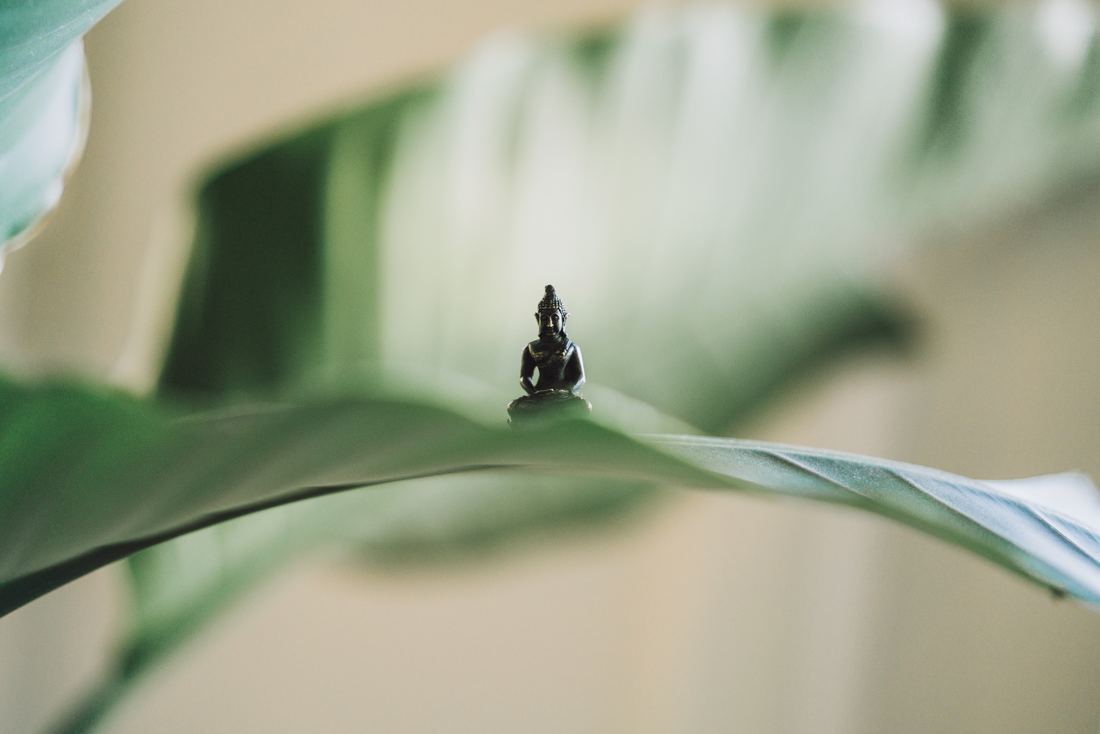 Ashtanga yoga is a great practice for beginner students. This lineage of yoga breaks down the core concepts of asana practice from the beginning. It is extremely beneficial when the student embarks on the Ashtanga journey by first experiencing the Mysore method rather than a led class. More common than not, I will hear from a prospective student, “I feel like I need to take the led class so I know what I am doing in the Mysore setting.” Though, the opposite is true.
The Mysore method allows the practitioner to learn at their own unique pace. Advancement to the next posture in the series is determined by the teacher. A student is encouraged to create a daily practice and when they consistently are guided by their teacher they are able to develop relationship within the practice. The teacher can take time to introduce the student to proper breath work, focus, alignment and so on. When we take group led classes it can be difficult for the teacher to address everyone’s individuality on the mat. How the Mysore method is structured, a practitioner is basically receiving one on one instruction within a group setting. Since people arrive and leave during an allocated time, rather than everyone showing up at once, the teacher can float from student to student giving instruction. If a student has never tried yoga before and attends an Ashtanga class, they have true beginner’s mind. There is no need to break habits that haven’t formed from home practices, class settings, etc. They are able to learn true foundational work that they can translate into other yoga classes they may take. They can confidentially move on their mat with breath, alignment and body awareness. The Ashtanga yoga method is truly a unique lineage of yoga. Anyone can benefit from it. The practice does not discriminate against physical capabilities, gender, age, and so on. It simply asks that you show up to your mat and be open and accepting. The healing benefits of this practice are vast. I encourage beginning practitioners and well versed yogi’s to try a class to understand the beautify of Ashtanga Yoga. “In the beginner’s mind there are many possibilities, but in the expert’s there are few” ― Shunryu Suzuki 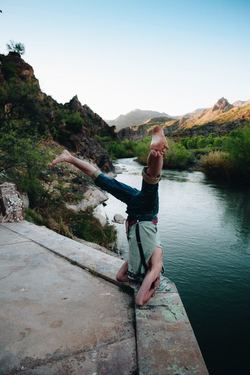 Along the eight-fold path of Ashtanga yoga is the third limb, asana. When translated from Sanskrit into English, asana means “posture”. We all typically begin on this third limb before we really breakdown and understand the first two limbs, Yamas & Niyamas. It is through asana practice that we really begin to explore the mind-body connection. As we breath and flow from posture to posture on our mat, what is our mind doing? When we marinate in an asana for five deep breaths, are we truly mentally and emotionally present? A fantastic posture to really answer these inquiries is Sirsasana A, headstand posture. To balance in this posture takes a great deal of focus, presence and engagement from head to toe, or rather from “toe to head”. Let us dive deeper into understanding the dynamics of “the king of asanas”. In Ashtanga yoga, we take position for headstand following a chaturanga after our backbends and counter pose, forward fold. From downdog, we bring our knees to the mat and begin to find our prep with our hands, arms and head. Before we bring our head to the mat, we want to to find a supportive distance between our elbows. Come down to your forearms and grab opposite elbow. This is the standard distance we want our elbows to be apart. If you have a longer neck then we bring the elbow closer together. Next, interlace the fingers out in front of you and close the palms. Place the crown of the head on the mat and snuggle the head against your closed palms. Curl the toads under, lift the knees and walk the feet as close to your face as you can. Make sure to be squeezing your chest and back, drawing the shoulder blades away from the ears and pressing firmly through the forearms and palms. Once your hips are stacked over your shoulders, engage mula and uddiyana bandha, and begin to lift the feet off the mat. If your feet don’t lift, stay here for five to ten breaths building strength and flexibility. Once lifted, point the toes as you engage your chest, back and abs. Allow the breath and full engagement of the body to continue to lift the legs until they are stacked evenly over the hips and shoulders. When you find balance and stability, strive to stay vertical for 15-20 breaths with your gaze between your brows. Slowly lower down with your legs together and take balasana, child's pose. Sirsasana A is a complex pose and should be practiced under supervision of a qualified instructor. There are various ways to enter the pose and many helpful tips and hints to understand the proper engagement to successfully achieve the full expression of Sirsasana A. The benefits are numerous and worth the journey and patience to finding balance upside down. The light in me sees & loves the light in you! Namaste, Kaitlyn Romei Why is it important to incorporate the closing sequence into our Ashtanga yoga practice? Whatever series of the eight limbed path we are practicing, we are starting with saluting the sun. We stoke an internal fire and increase our prana quality and intake to sustain us through our movements. We create an immense amount of energy and practice standing & seated series. The closing sequence is where we wind down and prepare for rest. Skipping our surya namaskars is like stepping out of bed and jogging without becoming present with our breath, focus and body awareness. Skipping the closing sequence is like finishing a run and not finding some stretches to release the tension created in our muscles. When we engage in activity without preparation or restoration, we increase the risk of having an injury or being counter productive to our purpose.
With Ashtanga yoga, if I don’t practice my closing sequence with integrity, I often leave my mat feeling overly stimulated or ungrounded. Too much emphasis can be placed on our seated series & we miss out on the benefits of a good quality closing session. Traditionally, the closing started with inversions, counter poses, seated meditation and final relaxation. Urdvah dhanurasana (upward facing wheel posture) was usually taught after secondary series was mastered. Now it has been threaded into the closing sequence to help counter all the forward bending in the primary series. The closing encourages our nervous system to calm down and prepare our bodies for final rest. We have the uplifting and energizing effects of our backbends. We then take a gentle fold countering or heart opening. Clarity and balance are practiced through our queen & king of asanas, shoulderstand & headstand. We weave in the their counterposes, fish & child’s pose. Seated meditation is the final piece of closing. All of the vinyasas, drishtis, asanas prepare us for this moment of stillness and eventually laying down for final relaxation. It is important to leave room for a well deserved posture of release. Our practice is then sealed off and we can approach our everyday life with vitality and post yoga bliss! Next time you approach the mat, try approaching your closing sequence with curiosity. Try slowing down and really being present in each breath towards final relaxation! “Put your heart, mind, and soul into even your smallest acts. This is the secret of success.” -Swami Sivananda Kaitlyn Romei 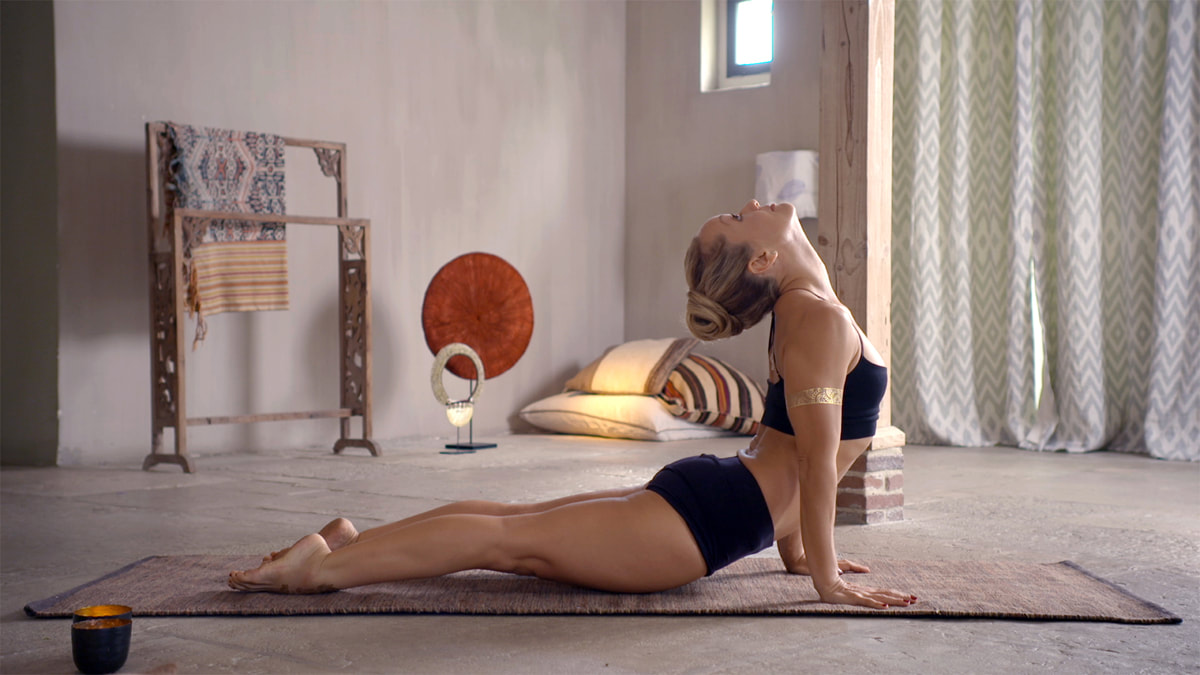 Kino Macgregor is a fifth series Ashtanga yogi, Authorized Teacher, and Florida native. She has built a thriving Ashtanga community in her hometown of Miami, and devotes her life to sharing the limitless potential of the human spirit through the inner tradition of yoga. Known for her beautiful and dedicated practice, she combines traditional teachings with grace and modernity, inspiring over two million people through social media. Join us as we roll out our mats for two knowledge-packed workshops with Kino on Saturday, December 16th, and be ready for an energizing and revitalizing day. She is a powerhouse in the Ashtanga community, not only for her dedication to the practice, but also for her bold approach to helping others do the same. She has produced six Ashtanga Yoga DVDs, written four books, started a line of yoga products, filmed online yoga classes, taught in over 100 different cities all over the world, co-founded a yoga center on Miami Beach (Miami Life Center) and founded Miami Yoga Magazine. Her social media page is filled with motivation and inspiration and, with the approval of Guruji, she has dedicated herself to spreading Ashtanga yoga to as many people as she can. She writes in an article on Elephant Journal, "I want to share the message of yoga, authentic real, lineage based yoga, with as many people as possible. I want to be a bridge between the average person and the authentic experience that I’ve known in India with my teachers and the Ashtanga Yoga method." Her approach has caused controversy in the yoga world, as well as her desire to share yoga in such a public platform, but she makes no apologies for herself. She has spent eighteen years in the practice of Ashtanga, many of those years studying in Mysore, and is one of the select few whom were granted their Certification to teach Ashtanga yoga by its founder Sri K. Pattabhi Jois. She deeply embodies the internal spiritual practice of yoga as well, writing "I practice six days a week and follow the guidelines for practice as best I can from my teachers, Sri K. Pattabhi Jois and R. Sharath Jois in Mysore. I go back to Mysore to continue my studies and be a student at least once a year. I follow the simple vegetarian diet that my teachers recommend. I do my best to be self-reflective in everything I do, I try (not always successfully) to be a nice person all the time. I work hard at everything I do, take nothing for granted and am above nothing. I am thankful every day for my students, both the real people in my classes and the real people watching my videos and reading my books at home." She maintains the proper yogic mindset as she navigates the ancient practice of yoga in a modern application, adapting to the world as it changes. We believe as she does, that the world would be a better place if every person practiced yoga and meditation -- she has found an entrepreneurial way to do so, and has done it well. We are excited to host her, and ready to learn from her vast experience. |
Archives
March 2024
Categories
All
|

 RSS Feed
RSS Feed
